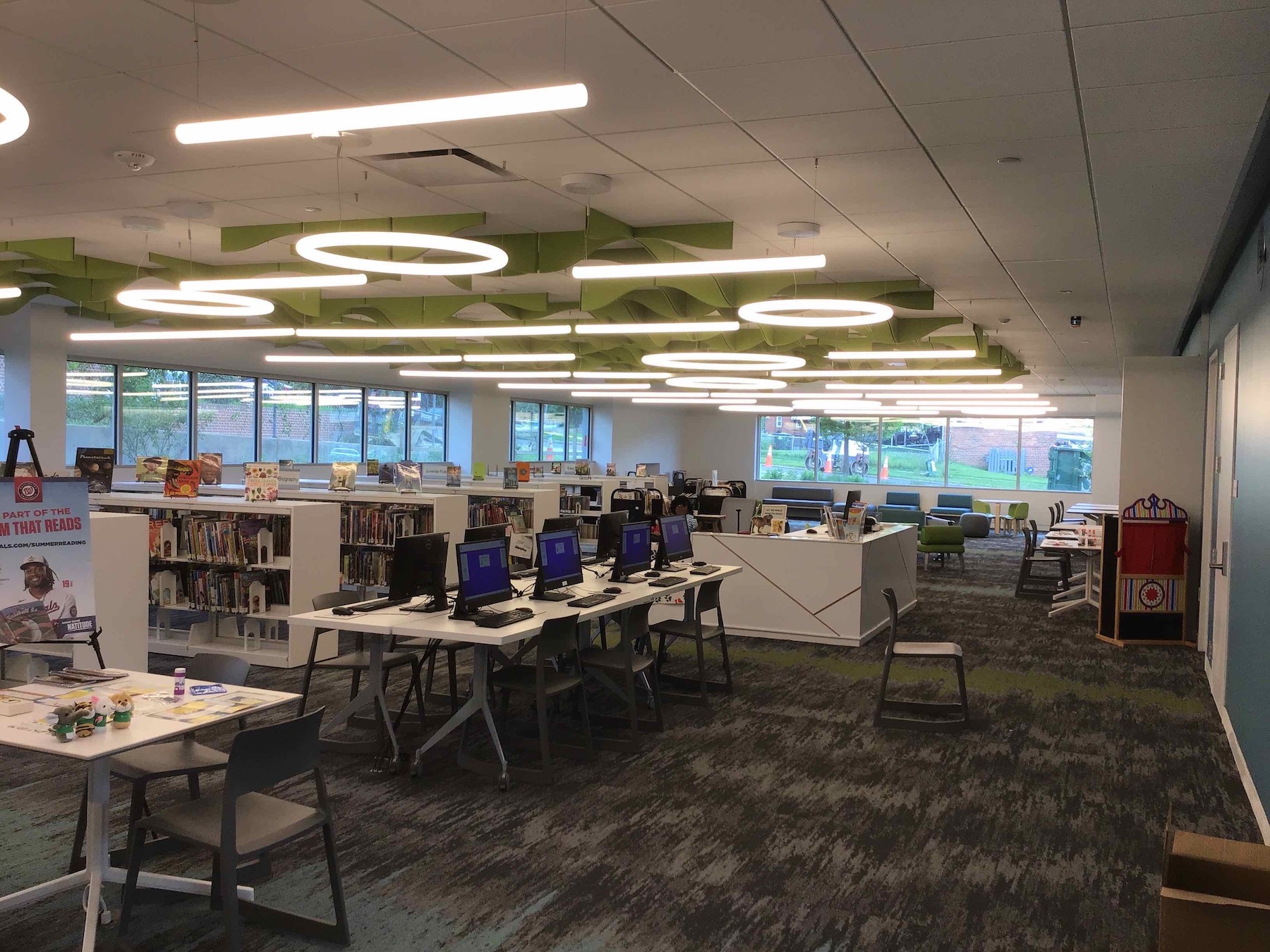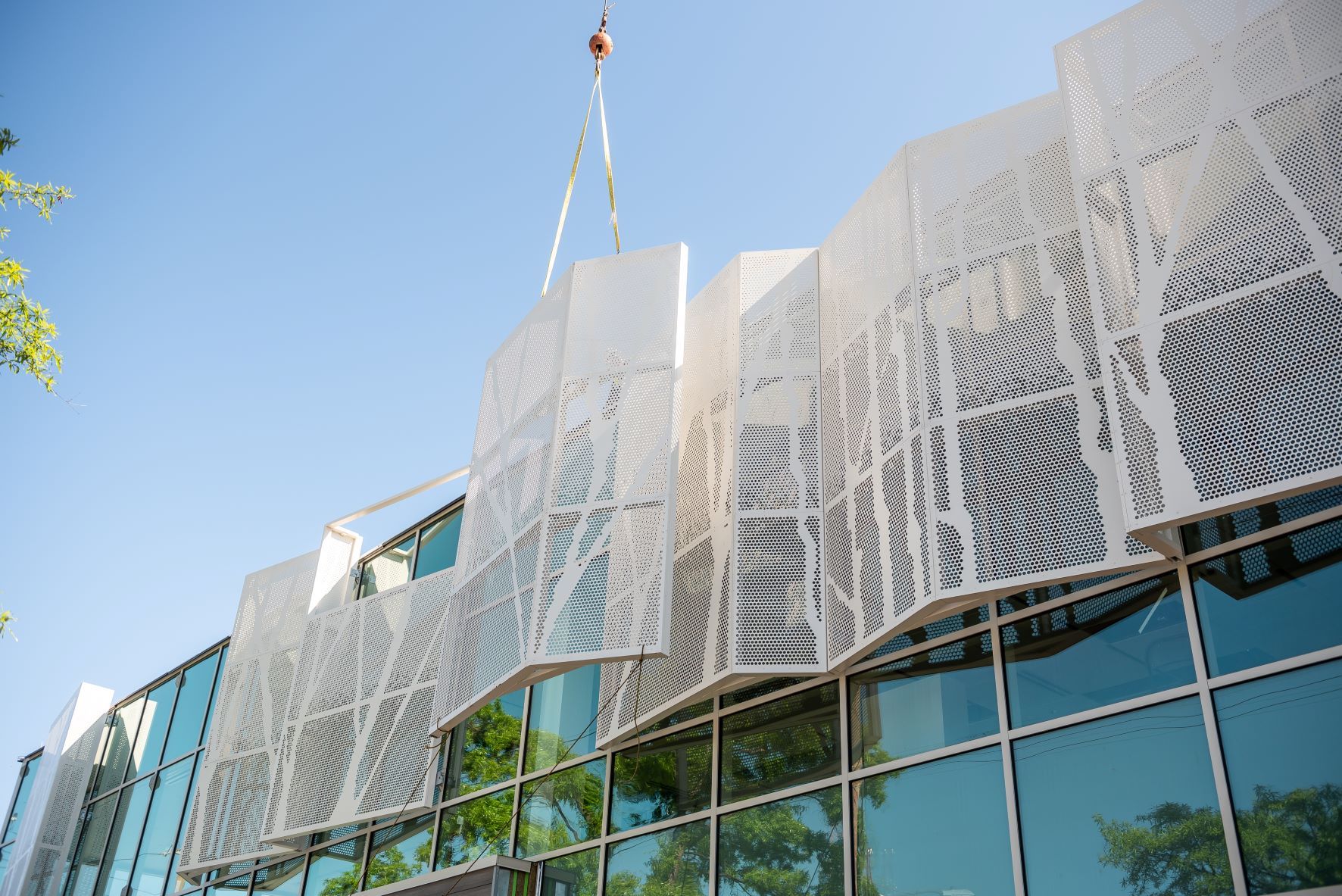People have been writing obituaries for libraries for decades. The May 2005 edition of MIT’s Technology Review ran a series of articles under the title “Death of Libraries: Myth and Facts.” Writing in the Guardian newspaper in December 2016, columnist Simon Jenkins compared libraries to churches and local railways: “People like having them around, and are angry if they close. But as for using them, well, there is so little time these days.”
Libraries also now find themselves at the center of a culture war as conservative groups have led a historic effort to ban and challenge materials that address racism, gender, politics, and sexual identity, according to the American Library Association’s (ALA) “State of America’s Libraries 2022.”
Yet, from Maine to California, libraries keep getting funded and built or renovated for the digital age. The $1.9 trillion American Rescue Plant Act included $200 million for the Institute of Museum and Library Services, the only source of federal funding for libraries.
In January 2021, Sen. Jack Reed (D-R.I.) with 30 cosponsors introduced the Build America’s Libraries Act, to support long-term improvements to libraries to better serve underserved and distressed communities, low-income and rural areas, and people with disabilities. This would be accomplished through the establishment of a Build America’s Library Fund financed by state contributions. (This bill is still pending.)
Brightspot, a subsidiary of the engineering firm Buro Happold, tells BD+C that 12 of its 32 Higher Education planning projects last year involved libraries. And the Netherlands-based architecture firm Mecanoo has, in recent years, designed a procession of library projects in the U.S., including the New York Public Library’s Stavros Niarchos Foundation Library branch, which opened last year; and, with OTJ Architects, the three-year-long renovation of the Martin Luther King Memorial Library in Washington D.C., which was completed in 2020.
A 2014 article in Places Journal was prescient in its description of future libraries as networks of integrated, mutually reinforcing, evolving infrastructures that serve simultaneously as reading rooms, social service centers, and innovation labs.
PART OF A BIGGER PICTURE

On a small but no less significant scale, the Lamond Riggs/Lillian J. Huff Library in Washington, D.C., officially opened on June 27. Designed by HGA and built by Consigli Construction, this two-story, 23,500-sf building is nearly 5,000 sf larger than the 17,930-sf library it replaces. Peter Cook, HGA’s design principal, called libraries “an extension of the home for a neighborhood,” and asserted that this particular project responds to the needs of residents with a wide range of spaces that includes an entry plaza.
The new $20 million library features expanded space for adults, teens, and children. There is a “Discovery Zone” for kids, and collaborative spaces that include living-room style seating. A large meeting room can accommodate up to 100 people or be divided into smaller quarters. There are also seven reservable meeting spaces—one for up to 12 people, two for up to six people, and four study spaces for two people each.
A protected front porch is accessible from inside the building and leads to outdoor meeting and working areas. (The landscape architect Lee and Associates designed bioretention areas, added a tree canopy, reinforced the streetscape form, and added buffer plants to screen the library parking lot.)
The library was designed and built to meet the LEED Gold certification standard.
According to the Washington Informer newspaper, this library’s opening is a continuation of the D.C. Public Library’s Facilities Master Plan, whose priority is building neighborhood libraries that are at least 20,000 sf, and flexible enough to adapt to changing technologies.
Nationwide, an ALA study found that 93 percent of public libraries provide or plan to provide free Wi-Fi access in their grounds even when their buildings are closed, while 44 percent have moved routers outdoors to improve public access, and 23 percent provide Wi-Fi hotspots for patrons to check out and use at home.
Related Stories
| Feb 23, 2011
The library is dead, long live the library
The Society for College and University Planning asked its members to voice their thoughts on the possible death of academic libraries. And many did. The good news? It's not all bad news. A summary of their members' comments appears on the SCUP blog.
| Feb 11, 2011
Former Richardson Romanesque hotel now houses books, not beds
The Piqua (Ohio) Public Library was once a late 19th-century hotel that sat vacant and deteriorating for years before a $12.3 million adaptive reuse project revitalized the 1891 building. The design team of PSA-Dewberry, MKC Associates, and historic preservation specialist Jeff Wray Associates collaborated on the restoration of the 80,000-sf Richardson Romanesque building, once known as the Fort Piqua Hotel. The team restored a mezzanine above the lobby and repaired historic windows, skylight, massive fireplace, and other historic details. The basement, with its low ceiling and stacked stone walls, was turned into a castle-like children’s center. The Piqua Historical Museum is also located within the building.
| Jan 21, 2011
Library planned for modern media enthusiasts
The England Run Library, a new 30,000-sf glass, brick, and stone building, will soon house more than 100,000 books and DVDs. The Lukmire Partnership, Arlington, Va., designed the Stafford County, Va., library, the firm’s fourth for the Central Rappahannock Library System, to combine modern library-browsing trends with traditional library services.
| Nov 23, 2010
The George W. Bush Presidential Center, which will house the former president’s library
The George W. Bush Presidential Center, which will house the former president’s library and museum, plus the Bush Institute, is aiming for LEED Platinum. The 226,565-sf center, located at Southern Methodist University, in Dallas, was designed by architect Robert A.M. Stern and landscape architect Michael Van Valkenburgh.
| Nov 9, 2010
Designing a library? Don’t focus on books
How do you design a library when print books are no longer its core business? Turn them into massive study halls. That’s what designers did at the University of Amsterdam, where they transformed the existing 27,000-sf library into a study center—without any visible books. About 2,000 students visit the facility daily and encounter workspaces instead of stacks.
| Nov 3, 2010
Seattle University’s expanded library trying for LEED Gold
Pfeiffer Partners Architects, in collaboration with Mithun Architects, programmed, planned, and designed the $55 million renovation and expansion of Lemieux Library and McGoldrick Learning Commons at Seattle University. The LEED-Gold-designed facility’s green features include daylighting, sustainable and recycled materials, and a rain garden.
| Oct 13, 2010
Bookworms in Silver Spring getting new library
The residents of Silver Spring, Md., will soon have a new 112,000-sf library. The project is aiming for LEED Silver certification.
| Aug 11, 2010
JE Dunn, Balfour Beatty among country's biggest institutional building contractors, according to BD+C's Giants 300 report
A ranking of the Top 50 Institutional Contractors based on Building Design+Construction's 2009 Giants 300 survey. For more Giants 300 rankings, visit http://www.BDCnetwork.com/Giants
| Aug 11, 2010
Jacobs, Arup, AECOM top BD+C's ranking of the nation's 75 largest international design firms
A ranking of the Top 75 International Design Firms based on Building Design+Construction's 2009 Giants 300 survey. For more Giants 300 rankings, visit http://www.BDCnetwork.com/Giants














